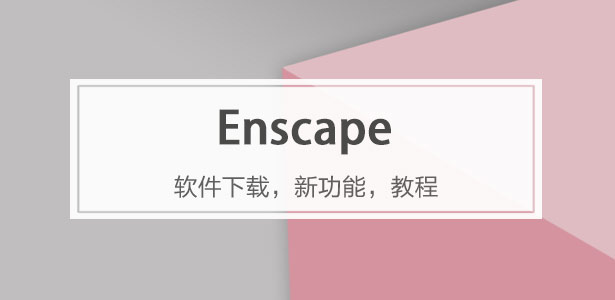* 主體類型
* 企業名稱
* 信用代碼
* 所在行業
* 企業規模
* 所在職位
* 姓名
* 所在行業
* 學歷
* 工作性質
請先選擇行業
您還可以選擇以下福利:
行業福利,領完即止!

下載app免費領取會員



“我們可以通過色彩的力量讓生活的空間更加人性化”
"We can humanise our existing spaces simply by deploying the radical power of colour"
由專筑網胖胖鳥,小R編譯
2023 年,托馬斯·希瑟威克(Thomas Heatherwick)發起了“人性化”(Humanise)運動,人們對此反應強烈。希瑟威克認為現在的建筑令他失望,因為這些所謂的建筑太過無趣,對公眾心理和健康產生了負面的影響,而他提出的解決方案則是呼吁人們共同創造更加有趣、更富有靈魂的建筑,讓人們在這樣的空間里感到愉悅和自在。
然而,當希瑟威克呼吁實施這一創意之時,卻招來一片質疑之聲。但他提出的問題確實值得我們深思熟慮:我們周圍的建筑物、居住其中的社區、學習和互動的空間——這些的設計最初目的是為了讓我們感到舒適和快樂嗎?如果我們仔細觀察身邊的環境,可能會發現學校、圖書館和社區中心常常給人一種“視覺沙漠”的感覺,因為缺乏特點、多樣性和富有靈魂的細節。要創建更富有視覺吸引力的空間,或許我們可以和希瑟威克一起努力。
而在眾多“使建筑物不再枯燥”的設計方案中,色彩的使用是其中一種非常有效的方法。盡管現代主義的發展趨勢常常使我們遠離那些明亮、醒目的色彩,而選擇更加克制的色調,但我認為,色彩是我們喚起舊建筑活力、讓其不再枯燥的有效方法。
在神經美學的嶄新視角下,我們認識到,長時間置身于枯燥、無生氣且單調的環境中,對我們的身心健康實為不利。這樣的環境非但不能帶來寧靜與放松,反而會激發大腦釋放壓力激素皮質醇,加劇我們的緊張與焦慮情緒。
When Thomas Heatherwick launched his Humanise campaign in 2023, skepticism came fast and furious. Decrying the negative psychological and public-health effects of what the designer calls "boring buildings", the campaign issues a well-meaning cry for interesting, soulful buildings that are better for people.
Heatherwick's campaign has been met with a barrage of criticism, but what if he's onto something? His line of inquiry offers an opportunity to take a step back and look at our built environment, at the places where our communities go to learn, connect, and find care, and ask, are these spaces actually designed to make us feel better?
When we look closely, we might see that our schools, libraries, and community centres in the US often feel like visual deserts – devoid of character, variety and soulful details. Instead of being satisfied with this status quo, we could do well to join Heatherwick's campaign, banding together to create more visually interesting spaces that improve our wellbeing.
One often overlooked yet highly powerful way to create "unboring" buildings is through the use of colour. While the trajectory of modernism has often led us away from bright, bold colours and towards a more restrained palette in our buildings and cities, I believe colour is an accessible and sustainable way to bring new life to old buildings that are failing to serve their users on a psychological, physiological or emotional level.
We know from the emerging field of neuroaesthetics, often referenced by Heatherwick, that being immersed in boring, unspirited, and monotonous environments is bad for our health. Rather than calm or soothe our nervous systems, these bland spaces actually do the exact opposite, stimulating cortisol production to increase stress and anxiety.

為了身心的健康,我們需要視覺上的滋養。不妨走進大自然,漫步其間,你會發現自然界的斑斕色彩、多樣質感、柔和光線與深遠景深,瞬間便能減緩心跳,帶來一份難以言喻的寧靜與平和。
然而,反觀孩子們的學習天地、家庭互動的空間乃至社區活動的場所,其視覺呈現往往未能與它們承載的重要功能相匹配。這些地方常顯得千篇一律,缺乏個性與溫情,給人一種疏離與不受歡迎之感,難以營造出公平、溫暖且充滿歸屬感的環境。
那么,為何不能將這些空間打造成色彩斑斕、充滿活力的樂園呢?畢竟,色彩的力量是巨大的,它能滋養我們的心靈,促進學習與成長。
要實現這一愿景,我們不必從零開始。正如建筑師兼色彩專家蘭德爾·菲爾丁所言:“研究表明,學習在豐富多彩的環境中更加高效。‘學習’的調色板上,不應只有灰、米、白或淺色系的單調。”簡言之,生命因色彩而絢爛,學習亦因色彩而生動。
因此,為了營造更加人性化、溫馨的建筑環境,我們無需大興土木,重起爐灶。通過巧妙運用色彩的力量,對現有空間進行改造升級,便能讓其煥然一新。這既是一種經濟高效的方式,也是對環境友好的選擇。一抹油漆、一些復合色素或是窗戶上的貼膜,就能讓建筑煥發生機,改變我們看待世界的視角,進而提升我們在其中的居住體驗。
We need visual stimuli in order to be and feel our best. If in doubt, simply take a walk in nature and marvel at how the variety of colours, textures, light, and depth of field can immediately lower your heart rate and bring a sense of calm.
However, when we look at the places where children learn, the essential places where families connect and community spaces where people are encouraged to grow and thrive, we find their visual expression pales in comparison to the soulful jobs they are intended to carry out. Stripped of character and personality, these buildings are often bland, colourless, and anything but welcoming, unable to foster a sense of equity and belonging.
Instead of soulless and institutional, why can't these places be colourful and alive? Especially because we know that colour nourishes us, increasing the human capacity for learning and growing.
"Research shows that learning benefits from a stimulus-rich environment," says architect and colour researcher Randall Fielding. “[Learning] is not supported by a palette that is dominated by gray, beige, white or off-white." In short, life grows where colour goes.
If we want a more humane built environment, we don't necessarily need to start from scratch with new, visually interesting buildings constructed from the ground up. The truth is, we can do much to humanise our existing spaces simply by deploying the radical power of colour.
It's a more sustainable approach to creating meaningful buildings that doesn't require a huge material or labour investment. Colour is transformational – simply by applying a coat of paint, a composite pigment or a window film, our buildings can change the way we see the world, and by extension, our place within it.

即使那些看起來很難用色彩裝飾的建筑,也可以通過巧妙的設計變得生動起來。例如,Shreesh Design工作室在印度Gujurat設計了一所幼兒園,由簡單的鋼結構組成,每個結構都涂成不同的亮色,整個校園變得生動有趣。同時,這種色彩的應用也使得建筑結構更容易拆卸和搬運。
在西班牙,建筑師Ricardo Bofill擅長將迷人的色彩應用于功能性元素,如樓梯和柱子,以及整個建筑。他認為,色彩是讓住宅充滿生機和快樂的方式,當時這些項目常常很單調,完全以功能性為主,忽視了美學。
Ricardo Bofill和 Shreesh 展示了大面積使用色彩的可能性,其他人則展示了選擇性地使用色彩的力量。在新加坡,信息通信部所在的 1934 年建造的新古典主義建筑,有 927 個被涂成彩虹色的窗戶,瞬間給這座原本冷漠的建筑帶來了親切感。
在葡萄牙,Mezzo Atelier 將一座 20 世紀初期的馬廄改造成兩座客房,引入了一座玫瑰色的新建筑,區分了新舊,并賦予了建筑親切感。在這里,色彩的使用很微妙,也很符合環境,表明使用色彩并不一定要大張旗鼓或故意突出。
我常常遇到抵制使用色彩的建筑師。他們通常的理由是,建筑必須與周圍環境相融合。然而,這樣的設計只會延續中立建筑的趨勢。如果我們可以打破這種循環,使用色彩的方式更有意義,那該多好。
Even buildings that seem resistant to the application of colour can be coaxed into animation. For example, Shreesh Design Studio created a pre-school in Gujurat state, India (pictured) that consists of simple steel structures arranged in a circle, each containing classrooms.
While the structures themselves lack ornamentation and focus on functionality, rendering each building in a different, brightly coloured hue helps the campus come alive with a playful sense of variety. The application of colour also keeps the structures modifiable, with each designed for ease of disassembly and transport.
In Spain, architect Ricardo Bofill was known for applying dazzling colours to functional elements like stairways and columns, and to entire buildings, like his salmon pink La Muralla Roja apartment complex in Manzanera, Spain. For him, colour was a way to bring life and joy to housing projects, which at the time were often drab and focused purely on functionality at the cost of aesthetics.
While Bofill and Shreesh demonstrate the possibilities when colour is applied in broad strokes, others reveal the power of a selective application of colour. In Singapore, the Ministry of Information Communications is housed in a 1934 neoclassical building whose 927 windows have been painted in the colours of the rainbow, bringing an instant air of approachability to an otherwise stoic building.
In Portugal, Mezzo Atelier has updated an early-20th-century stable into two guesthouses, introducing a new volume in dusty rose that distinguishes old from new and lends an inviting sensibility. Here, the colour is subtle and contextual enough that the building still fits into its surroundings, showing that the use of colour doesn't have to be about loud gestures or standing out.
I often encounter architects who are resistant to using colour. Usually, their argument against colour has to do with a belief that buildings must be contextual and fit with their surroundings. But designing this way will only perpetuate the trend towards neutral buildings. What if we can break the cycle and use colour the way it is most meaningful: with intention?

想想像Luis Barragán、Ricardo Bofill和Emmanuelle Moureaux這樣的設計師——他們不怕在設計中注入大量的色彩。他們使用色彩使建筑物變得親切和吸引人,成為讓靈魂感到愉悅的地方。他們的建筑已經深受社區和建筑界的喜愛,我們可以從他們的勇氣和使用色彩的意圖中學到很多。
同時,我們也不應該僅僅為了與眾不同而設計建筑。色彩應該被用來產生特定的影響。我們需要回到我們的設計目的——我們的使命是服務于他人,使用我們的技能創造讓人們感到滋養的空間。
建筑應該讓我們感到快樂和聯系,感到被呵護和珍視,個人和集體都能從中獲得能量。還有什么比色彩更能實現這一點呢?
Think of designers like Luis Barragán, Ricardo Bofill, and Emmanuelle Moureaux – trailblazers who weren't afraid to inject swaths of colour into their designs. They used colour to make their buildings inviting and engaging, places that make your soul happy. Their buildings have become beloved by their communities and the larger architectural canon alike, and we can learn much from their bravery and willingness to use colour with meaning.
At the same time, we shouldn't strive to create buildings that stand out simply for the sake of being different. Colour should be used intentionally and for a focused impact. It's important to return again to our purpose as designers – our calling is to be of service and to use our skills to create places that nourish people.
Our buildings should inspire joy and connection, make us feel nurtured and valued, and energise us personally and collectively. What better way to achieve that than through colour?
Laura Guido-Clark is the founder of colour-focused design consultancy Love Good Color and the non-profit Project Color Corps.
本文版權歸腿腿教學網及原創作者所有,未經授權,謝絕轉載。

上一篇:政策新聞 | 2024年西藏自治區第二十三批二級注冊建筑師、二級注冊結構工程師注冊人員名單公告
下一篇:建筑賞析|ARVO16:30酒店--接住光影草木的城堡
猜你喜歡

BIM建筑|上海院新作:臨港青少年活動中心(臨港少年宮)

建筑賞析|GardenNomad,從一畝園到PudongVilla

建筑賞析|“璞玉”變身高樓:三松璞玉大廈的“跨界”秀

BIM建筑|2024,讓我們印象深刻的攝影

BIM建筑|經典再讀232|巴特羅之家:浪漫的建筑

BIM建筑|都市實踐新作:北京新世紀實驗小學改造
最新課程
推薦專題








































